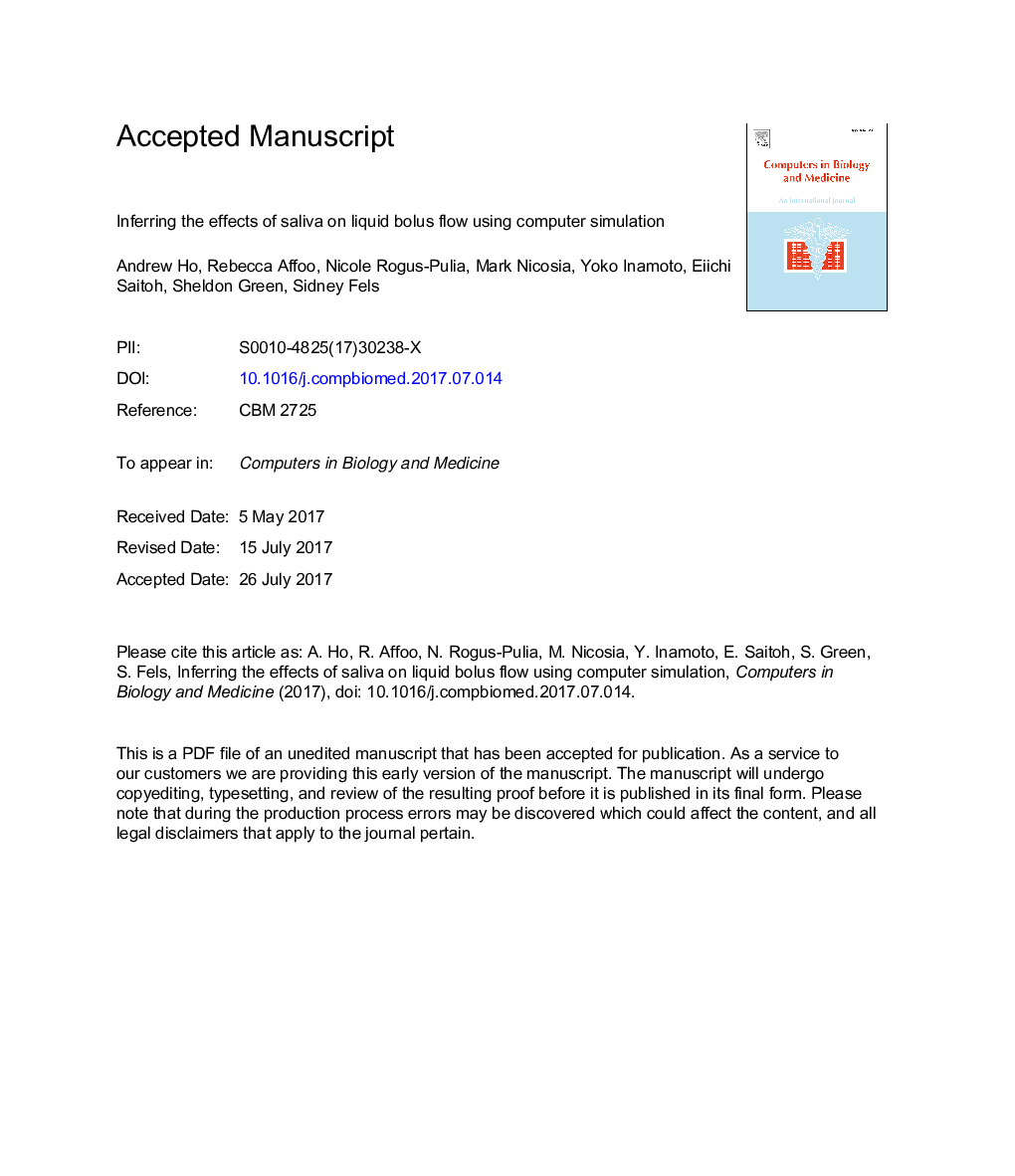| Article ID | Journal | Published Year | Pages | File Type |
|---|---|---|---|---|
| 4964891 | Computers in Biology and Medicine | 2017 | 25 Pages |
Abstract
Computer simulation of liquid bolus flow is used to test the assumption that a slip boundary condition approximates a healthy swallow due to the presence of saliva lubricating the bolus. Six dynamic, 320-row area detector CT (ADCT) sequences of normal subjects swallowing thin, nectar, and honey-thick liquids are used in this work. The aerodigestive tract is segmented from the images in order to create a dynamic 3D geometry, which is subsequently used to drive a Smoothed Particle Hydrodynamics (SPH) fluid simulation of the bolus. The results show that the no-slip simulation, approximating no-lubrication, provides a closer match to the ADCT bolus images than the slip simulation, particularly in the oral phase. This finding suggests that the role of saliva in swallowing liquid boluses is not to lubricate the aerodigestive tract, and that there is another reason for its importance in normal swallowing of liquids.
Related Topics
Physical Sciences and Engineering
Computer Science
Computer Science Applications
Authors
Andrew Ho, Rebecca Affoo, Nicole Rogus-Pulia, Mark Nicosia, Yoko Inamoto, Eiichi Saitoh, Sheldon Green, Sidney Fels,
